[transcription provided by collection donor]
Oct 3, 1917
Over the Tapes
It’s nothing but a rehearsal of a show (an engagement with the enemy). To put this rehearsal on we take a large track of land, actual size of the real area, & as similar to it as possible. This land is now mapped out with white tapes to represent roads, trenches & houses which the Hun actually holds & part of our own. Here & there different colored flags are set up to represent strong points, pill boxes & final objective. Also, any other thing of interest.
When this is done we go over the land with our maps & make ourselves thoroughly acquainted with everything. Take our N.C.O.’s over so that they get to know the area, then platoons go over & companies & the battalion.
Now the whole brigade goes over just as if we were taking the land from Fritz so that we get to know our relative positions, where we are to go & what we are to do.
We are now ready to put on the show. (It takes about two weeks to do this.)
Oct 8, 1917
“Tanks”
Col. Sam Sharp, Capt. Cote & I visited the “Tanks Camp”. We were welcomed & very well entertained by the officers. Capt. Palmer took us over to his company of Tanks. They had our colors up. We watched the Tanks go over trenches, knock down a stone wall & demolish a brick house. All these things were done with slow deliberation but no hesitation. We were invited to enter a Tank & have a ride – which we did. They have two six-pounder guns & twelve machine guns. Armour plate protective against rifle bullets & shrapnel. A direct hit from a shell will put them out of commission. They are about 20 ft. long & 8 ft. wide. You can’t roam around inside. We had quite a ride going over a shell hole, tore up barbwire & went over the demolished building. They have three gears but have to stop to change gear. The noise inside is very loud.
Oct 11, 1917
Trekked from Fraser Camp at Mt. St. Eloi, passing through Camblain L’Abbe, Les 4 Vents, Estree-Cauchy, Gauchin-Legal, around Ranchicourt, through Houdain, Divion & to Ourton where we are billeted. It was a good day for marching but rather cold riding.
The weather lately has been very chilly & much rain, hence plenty of mud.
Oct 15, 1917
Left Ourton 8am & marched to Tincques & here entrained at noon. Arrived at Godewaersvelde 9:15 & marched to Caestre. Arrived at our billets in a farmhouse at 11:20 pm. It was very dark & cold. Slept on the floor & were worried by rats.
The farm is of the usual French-type: made up of the house, barns & out-buildings forming a square, the centre of which is a cesspool in which everything is dumped & on which the pigs, chickens, ducks & cows congregate. We get all the farm noises with a concentration of odors. Sanitation is an unknown thing amongst the French people we come in contact with.
Oct 19, 1917
Got some corn on the cob from the farmers. They laughed at us for wanting to eat it saying it was only fit for pigs. Seeing that we eat it you can imagine what queer people they must think we are.
Oct 22, 1917
Moved from Caestre camp, entraining at 3:15am & arriving at Ypres at 8 am. Marched to St. Jean through a drizzling rain. Here we had a row with the 52nd Bn over our campsite. It was some campsite: in an open field ploughed up with shell holes, all of which were full of water. No shelter, no dugouts & Fritz entertaining us with a shell every now & then. We eventually got some tents & put them up in this mudhole.
Impossible to dig in as one foot down & you strike water. During the night Fritz dropped bombs doing considerable damage all around us. It was “no bon”.
Ypres is one mass of ruins. Traffic is immense & congested. Fritz can’t help getting some of us with every bomb or shell he puts over.
A few pieces of shell went through my tent but did no damage except to confirm the old saying “There is no place like home”.
Oct 24, 1917
Still in the mudhole & narrow escapes are numerous. Our artillery is hammering blue blazes out of Mr. Hun. The guns are all around us & we are only in support. Of course Fritz gets a few of my boys now & then. He can’t help hitting us, we are so congested. Capt. Pratt’s helmet saved his life today though he got wounded in the right shoulder.
Oct 25, 1917
Struck camp in the morning & marched for the front line. Stopped at Wieltje & then moved on to Banks Farm where we took up quarters in Pill-boxes at Pemmeron Castle. The castle is a stretch of imagination. The Pill-boxes are a reality – strong holds left by the Huns. They are 3 ft high, 6 ft long & 5½ ft wide. You have to crawl into them & three men can sleep in one. Their walls are 3 to 4 ft reinforced concrete so here you are comparatively safe.
Passchendaele Ridge
Spent two nights here & were heavily & frequently shelled by H.E. Our batteries were busy all around us. Around this area there are about eighteen tanks which have been put out of action during the recent advance.
Talk about supremacy of the air – well Fritz is over morning, noon & night & he does a lot of damage with his bombing raids. His planes come over the battle formation & are very daring.
While on this tour the O.C., Lt. Col. Sam Sharp (politician) told me it was a case of each man for himself & that I would have to look after my own rations & it was a poor man who couldn’t take care of himself. That was enough for me. I told my boys that I would feed with them. They sure did feed me well which did not please the O.C. & I didn’t invite him to a hot meal with me, no sir not after what he said. He only had a few sandwiches. Major McConnell, 2nd in Command, was sent for & joined us.
Oct 27, 1917
Marched to Otto Farm, a strong point once held by Fritz & now used as a dressing station. We were severely shelled. Later moved to Waterloo R.A.P. – this is another strong point. Our boys went into Brigade front line, Passchendaele Ridge & held it for 32 hours. My work was continuous, standing in water up to my ankles, the smell was bad & the place crowded. I got a touch of gas from some of the patients. My batman, Red McPhadden, & dresser, Lt. Corp. Ross Jefferie, did great work making the wounded comfortable with hot drinks & a bite of food, changing their socks, etc. & helping me to the best of their ability. We had no rest & started out at 2:15am for the rear.
Oct 29, 1917
All the way out we were shelled, our escapes numerous. For over two miles shells exploded all around us, sometimes knocking us over & burying us up in mud. It was the mud that saved our lives: the shells bursting would go up instead of spreading out. We got between two barrages but managed to run the gauntlet & in doing so were gassed. Arriving at the Relay dressing station at Banks Farm I went in & had a dressing put on my feet. They were swollen & blistered. Just as I came out Fritz opened up on H.E. barrage right around us. We dove into different shell holes & wallowed there for half an hour in the water & mud. The firing suddenly ceased & we beat it hell mell for election. The rest of our trips out was not exciting. At Wieltje were we were to rest. I got some food but they had only three blankets for four officers so I sneaked off to the dressing station about a mile away where I arrived at 4:45am & here had a good sleep on a stretcher. When I woke up it was noon & the first man I saw was John Briggs. Went back to the Bn & held a very large sick parade.
Oct 31, 1917
Back to Pemmeron Castle where we were heavily shelled & lost several men. Later, moved up to Otto Farm in close support. We were again gassed. Remained here till Nov 2/17 when we moved back to Ypres.
The gas was of the mustard variety, though there was some Phosphine & tear-gas floating about. I got most of my gas from patients brought in wounded & gassed. It is exceedingly hard to do dressings with a box respirator on, in candlelight.



